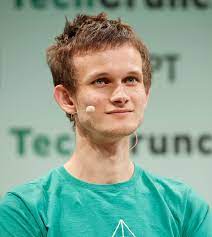Vitalik's keynote speech in Hong Kong: The protocol has rapidly developed over the past 10 years, but there are two major issues: efficiency and security
Author: Weilin, PANews
During the 2024 Hong Kong Web3 Carnival, Ethereum co-founder Vitalik Buterin delivered a keynote speech titled "Reaching the Limits of Protocol Design" at the "Web3 Scholars Summit 2024" hosted by DRK Lab.
He introduced that in the 2010s, protocols based on basic cryptography were hashes and signatures. Subsequently, protocols developed rapidly. In the 2020s, protocols based on advanced cryptography include ZK-SNARKs, 2PC, MPC, FHE (Fully Homomorphic Encryption), aggregation (including through IVC, ICD, etc.), and advanced P2P networks.
Vitalik stated that current technologies like ZK-SNARKs, MPC, and FHE face efficiency and security issues. For instance, Ethereum's slot block time is 12 seconds, the "normal" block verification time is about 400 milliseconds, and the ZK-SNARK proof time is about 20 minutes. Ethereum's goal is to achieve real-time proof. There are several solutions to the efficiency problem, including parallelization, aggregation trees, efficiency enhancement (using SNARK algorithms and hashes), and ASIC acceleration hardware solutions.

The ZK-SNARKs circuit vulnerability issue can be addressed by security committees and multi-prover mechanisms. In the future, AI can assist in debugging and further resolving these issues.
"I think an interesting future direction is to use AI tools, potentially employing new tools for formal verification. For example, proving that there are no vulnerabilities in zkEVM," he said. "Maybe in the future, we could really achieve a bug-free world. That’s a bit crazy."
Additionally, when discussing the efficiency of signature aggregation, Vitalik Buterin pointed out that the current situation involves about 30,000 signatures per time slot, which requires high node demand. The goal is to support as many validators as possible while reducing node requirements, using relatively simple protocols. According to theoretical limits, each participant needs 1 bit of data per time slot, with no lower limit on computation.
"So the conclusion is, basically, we need to consider that we need protocols to reach the limits of what you can do with cryptography. We have reached a point where our cryptography is much stronger than it was decades ago, but it can be even stronger. At this point, I think we really need to start considering what the limits are and how we can truly reach those limits," Vitalik concluded.










